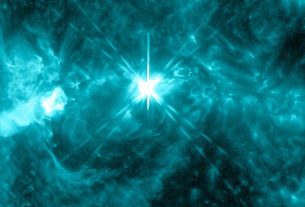Black holes are said to be present at the centre of nearly all huge galaxies where they feed on galactic dust, gas, and stars. They are some of the most mysterious celestial phenomena that have fascinated space enthusiasts and scientists alike. To gain a better insight into these black holes, researchers from Dartmouth College have conducted a study that analyses the light from supermassive black holes.The technique could allow scientists to understand the life cycle of these black holes.
The light from supermassive black holes can be different in terms of colours, brightness, and spectral signature. It was believed this difference appeared due to the different viewing angles and how much the black hole was masked by its “torus” or the doughnut-shaped ring of gas and dust that surround active galactic nuclei (AGN).
“The light signatures from these objects have mystified researchers for over a half-century,” said Tonima Tasnim Ananna, a postdoctoral research associate at Dartmouth. Ananna is also the lead author of the recent study published in The Astrophysical Journal.
In the study, it was observed the amount of dust and gas around the supermassive black holes depend upon the pace of their growth. When such black holes feed at a high rate, they disperse dust and gas surrounding which makes black holes appear brighter.
The research also highlighted the fundamental differences between supermassive black holes with different light signatures. It also underlined that the differences cannot be explained only by whether the observation occurred through or around an AGN.
Ananna developed a computational technique to assess how the obscuring matter affected the observed properties of the black holes. The observations showed that there was a need to revise the existing theory of AGN that puts both obscured and unobscured AGN in the same pool.
“Over time, we’ve made many assumptions about the physics of these objects. Now we know that the properties of heavily hidden black holes are significantly different from unobscured AGN,” said Ananna.


